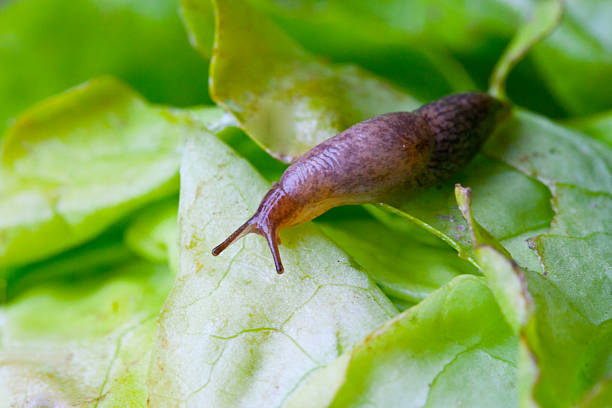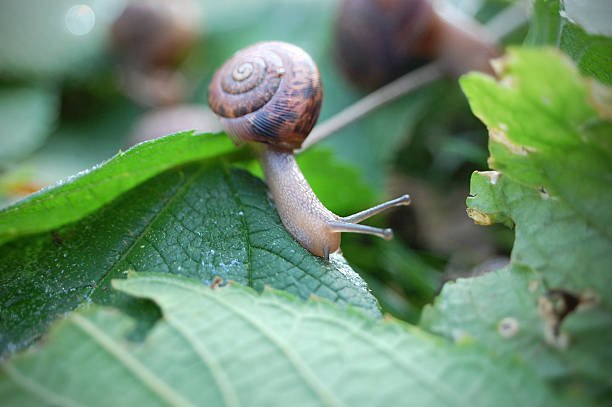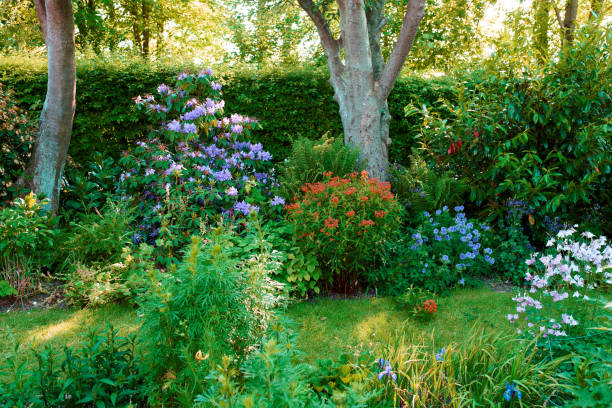How to Control Slugs & Snails: The Ultimate Guide To Getting Rid Of Them In Your Garden
It has been a familiar sight for many people to see snails (with shells) and slugs (without shells) in the garden and sometimes in their own house. They primarily feed on plants. These tiny creatures eat both the leaves and the fruit of plants, causing significant crop damage. They tend to group near the edges of house plants, or you might look down to see them crawling along with the soil. Slugs spend the day in moist soil, crevices, cracks, or under soil surface debris. They are active mostly at night, but feed and reproduce during the day when it rains, fogs, or after irrigation. You can get rid of your unwanted guests with the help of non-toxic methods without causing any harm to your household members.

Table of Contents
Non-Toxic Methods
Predators
- Toads and Frogs-both like to eat slugs, so if you can, put your garden near where they live. When toads have dark enough, wet places to hide, they don’t need to live near a pond.
- Ducks– notably the carnivorous Khaki Campbell and Indian Runner breeds, are natural slug predators. Let the ducks forage in the garden before planting and keep them penned around the perimeter.
- Nematodes-Slugs can be controlled for up to six weeks with nematodes, which are microscopic parasitic worms. Soil is watered down with an organism that lives in sync with the parasite and serves as food. It is then up to the nematodes to go out and find their slug prey. Slugs swell and die within three to five days. Because this method works so well, slug-predators leave for better hunting grounds, creating a perfect situation for an overabundance of the little critters once again.
- Beetles-Slug eggs and young are readily consumed by scarab and rove beetles. Create a haven for these beetles. You can place a plastic box upside down on top of some straw with rocks inside. You can also put rocks under some overhanging plants to provide cover.
Soil Treatments
- Diatomaceous Earth-“Insect Dust” (also known as diatomaceous earth) is the fossilized skeletons of microscopic creatures preserved in a chalky dust form. Soft-bodied pests are harmed by their lacerated edges, which cause them to become dehydrated. You can use this powdery, granular material to keep earwigs, slugs, and other garden pests at bay by sprinkling it around garden beds or individual plants. You can also use it to make a foliar spray by mixing it with water. Please use diatomaceous earth during dry weather and reapply after it rains to get the most out of your product. When applying, be sure to use eye and respiratory protection. Diatomaceous Earth should be purchased from a natural or Food Grade source rather than a pool grade source, which has a smoother edge that is less effective.
- Seaweed-It acts as a natural slug deterrent. Apply seaweed mulch around the base of the plants or the bed’s perimeter. When it dries, it will shrink to about an inch deep if you pile it on 3 to 4 inches thick. Slugs tend to avoid salty foods, such as seaweed. Please do not allow the seaweed to contact the plant stems by pushing them away from them. During the hottest months of the year, seaweed dries out and becomes extremely rough, making it difficult for slugs to crawl on it.
- Bran-Slugs will swell up and die if they eat wheat or corn bran, a desiccant. Slugs love it, so be sure to sprinkle it around your vegetable and flower beds and keep an eye out for them to eat it. Grind up your brand in your food processor until it’s finer to make it more appealing to slugs. While other soil treatments may need to be reapplied after heavy rain, bran is an exception. Cheap and non-toxic to humans, it’s a good option. Most feed stores sell bran in bulk as well.
- Coffee grounds deter coffee Grounds-Slugs sprinkled on top of the soil. On the other hand, it’s unclear whether or not using strong grounds like espresso in the garden will negatively affect the plants. Moderation is advised when using coffee grounds. In June 2002, Nature reported on a study that found that slugs and snails die when they are sprayed with a caffeine solution. Spraying plants with this solution stop slugs from eating them and kills slugs. To make a spray, you need more caffeine than you would find in a cup of coffee (.05–07%). It means that homemade sprays aren’t as effective. Look for new commercial sprays that have caffeine in them, like sprays sold in stores.

Traps
- Beer – they are loved by slugs as a sweet beer lure. Beer bottles coated with either flaked corn or flour, the traps provide snails and other soft-bodied pests, including slugs. Still, they poison them instead of killing them instantly. It works because beer contains a higher than normal amount of alcohol mainly. Several varieties are made, including plain and caffeinated versions. Alcohol consumption in slugs is strongly correlated to their death rates, so these traps seem tailor-made for the problem they intend on solving—slug infestations!
- Overturned Flowerpots– The idea is to leave some sort of structure that the slugs will get stuck into and drown in. Kept up for several days, these structures are free from worry about rain or water damage. There can be a variety of these traps if you look hard enough. Though many contain empty beer bottles with no scent, just concentrated sugar-water in flowerpots! Also, try placing any small plant that has been thoroughly cooked until leaving nothing but tough stems with a sweet rooting substance on them as the base of your trap.
- Grapefruit Halves– Slugs love grapefruits. Turn up your doorstep at night with a bit of lantern and two half-cut lemons (juice squeezed into the cut part of one) in an empty jam jar on each side, then wait for morning to come before bringing out the slugs!
- Board Trap– Board traps are nothing more than signs on telephone poles or similar board barriers that slugs will come to at night. It should be emptied every day as it needs to change the sign’s scent and prevent too many slugs from munching into this setup. It encourages them to hit nearby bushes instead!
Border Control
- Copper– Never underestimate the power of copper! Place some penny-sized disks around your yard, such as those from a scrap mill. These discards are dreadful to look at constantly. Still, slime molds already thrive on copper outdoor catering if they do not taste bad enough. Also, it’s resistant to corrosion, keeping slugs away for longer than other products.
- Lava Rock– Slugs love hard stony surfaces for their vehicles. It makes them resistant to friction, which is why they operate below the ground. Lava rocks catch many slugs in one go before this natural resistance declines. Then at just the right angle with a hinge itself, you can cause an explosion to bring on blistering pain that may be fatal to your foes, or add a fun new ingredient!
- Electronic Slug Fence– Electronic slug shocker fences are nothing more than a light and sound scare mechanism. Both halves should be turned on simultaneously. However, you can alternatively switch one using the remote control sensor, which is in an area where slugs often come to the ground! In this case, only a quarter of your garden will get maintenance.
- Cloches – A cloche is a protective cover for growing seedlings that helps supplement shellac and not much else. Cloches work by protecting the crop of young plants, so this will only be good if you have to produce to protect in particular.
Other Deterrents
- Salt is a quick way to remove slugs entirely, but only make sure it is coarse enough not to burn them. Otherwise, the light exposure will stun by pain and cause vapors of carbon dioxide that kill slugs in seconds!
- Ammonia– For those afraid of it, ammonia is surprisingly not a wrong choice! You can sprinkle this chemical regularly. Keep some small crevices to hide under in your plans, but if you want to stop the process thoroughly, use an iodine-based remover.
- Watering Schedule– Some slugs are so engorged with moisture they will die when the water source dries up. There is no definite way that works all time. Still, you can use shallow pans or bottles in areas around your plants which is a trade-off quality for the quantity of killing grounds!

Make Your Garden Unappealing to Slugs and Snails
Water-Savvy Garden
- Avoid overhead watering. If your water is from the top, it forces a lot of heat into mulched beds that are otherwise below where slugs would be warm enough to find moisture.
- Water your garden when it’s raining instead! This way, all your work is done for you by mother nature and not you! When this option comes up, get an inexpensive sprinkler especially designed to eliminate pests rather than wasting time clearing up what they do manage. These come in geyser-pad design and “sprinkler,” which is a far more effective method of killing them.
- Irrigation pond. It will attract frogs or provide habitat for ducks, or both, effective slug predators.
Design of Your Garden
- Make use of sharp and pointy gravel. Slugs and snails can’t climb on steeply sloped surfaces. Slope gravel around the foundation of your garden to prevent them from entering other areas without giving up everything else you’d like for their demise!
- During the wet season, don’t use straw or leaves as mulch. Slugs will go for the biggest and filthiest targets when it’s wet out, so getting rid of what they wouldn’t eat during the dry season isn’t nearly as critical. Allow lots of air circulation without mulching and by late in the bedding, replace that with loose black plastic. The slick surface makes them pretty unpleasant on their own too. It is possible to reduce the slug population by using mulch during the drier months of the growing season. Slugs can also be deterred by using sand as mulch.
- Lighting– Make use of lighting! As slugs move towards the least damp areas. They tend to climb vertical surfaces, so placing lights along these pathways is an excellent way of helping them cover up their evidence! You can make your trip-lites or just run a powerful tungsten bulb above the ground around where you want slugs. Adding slug barrier spikes also comes in quite handy. It will help keep even more out of areas where plants are cared for with care but not lots of money.
- Raise your garden beds. If you have no steps at the bottom of your beds can help to prevent slug infiltration. Using mainly flowers and herbs could be a really important step in helping keep slugs out! Just make sure that plants that may easily succumb to damp treatments are grown near the top (for instance, around an apothecary).
- Building compost pile– It encourages bettles who love to eat slugs.
- Remove weeds– Cutting back non-host or slug tolerant plants near your crops may lead to a reduction in slug numbers.
Softscape
- Among slugs’ favorite foods are potatoes, peas, beans, and celery, to name a few. You should concentrate your efforts here if you take the time to wrap plants in copper foil individually.
- Many aromatic herbs, such as rosemary, are known to repel slugs.
- Marigolds and black-eyed Susans, when planted along the edges of gardens, not only look lovely, but they also deter slugs.
- On the other hand, other plants are more resistant to or less affected by slugs. Astilbe, campanula, lobelia, phlox, ranunculus, and viola are examples of such flowers.
- For drier conditions plants, these are reedgrass, lily, fountaingrass, milkweed, balloon flower, switchgrass, sage, stonecrop, etc.
- For full shade are bleeding heart, creeping and woodland phlox, gray’s sedge, plantain sedge, Japanese sedge, lady’s mantle, etc.
- For light to partial shade are turtlehead, evening primrose, false spirea, spurge, palm sedge, and blue sedge.
